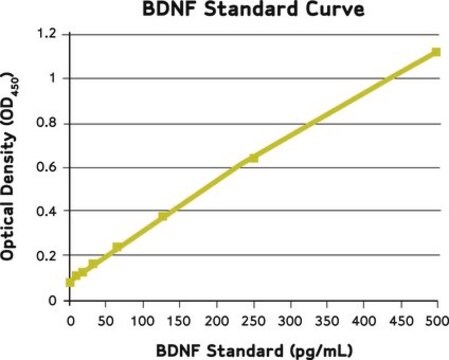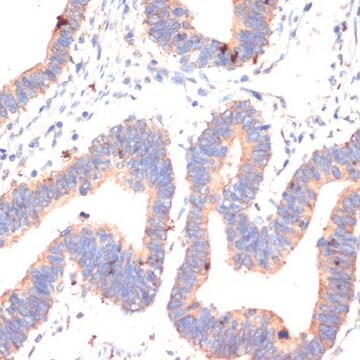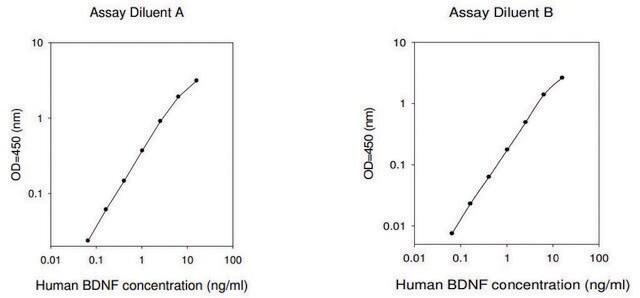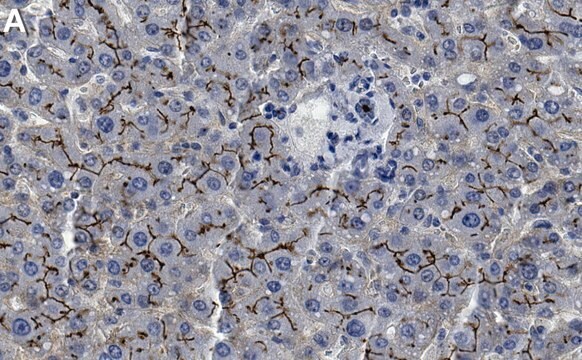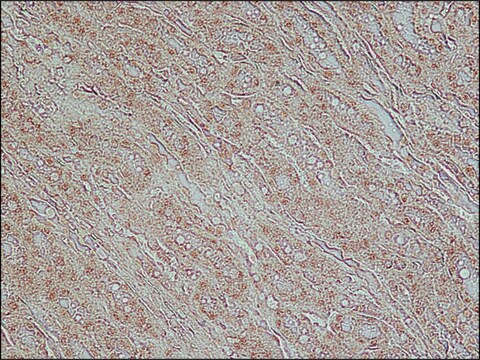AB1513
Anti-Brain Derived Neurotrophic Factor Antibody
serum, Chemicon®
Sinônimo(s):
BDNF
About This Item
Produtos recomendados
fonte biológica
sheep
Nível de qualidade
forma do anticorpo
serum
tipo de produto de anticorpo
primary antibodies
clone
polyclonal
reatividade de espécies
human, rat
fabricante/nome comercial
Chemicon®
técnica(s)
ELISA: suitable
immunohistochemistry: suitable
western blot: suitable
nº de adesão NCBI
nº de adesão UniProt
Condições de expedição
wet ice
modificação pós-traducional do alvo
unmodified
Informações sobre genes
human ... BDNF(627)
Especificidade
The antibody was tested on human and rat derived samples, but based on sequence similarity it is expected to react with mouse and other mammalian species. The peptide sequences of human, rat and mouse BDNF are identical.
Imunogênio
Aplicação
Immunoblotting: 1:200-1:2,000 we recommend preparing the BDNF samples for western blot by the method of Semba-Katoh, R et.al (J. Neurochemistry 69(1):34-42, 1997) because BDNF is not easily extracted in standard buffers. Dissected tissues should be homogenized in 10 volumes of 100mM phosphate buffer containing 1mM EDTA, 2M guanidine hydrochloride (pH 7.2), and three protease inhibitors, 10mM N-ethylmaleimide, 0.36mM pepstatin, and 1mM PMSF. Homogenates are then sonicated and centrifuged at 46K x g for 30 minutes at 4°C.
ELISA: 1:200-1:2,000
Inhibition of biological activity in vitro: 1:10-1:50
Use neat for in vivo animal studies.
Optimal working dilutions must be determined by end user.
Neuroscience
Neurochemistry & Neurotrophins
Neuroinflammation & Pain
forma física
Armazenamento e estabilidade
Informações legais
Exoneração de responsabilidade
Não está encontrando o produto certo?
Experimente o nosso Ferramenta de seleção de produtos.
recomendado
Código de classe de armazenamento
10 - Combustible liquids
Certificados de análise (COA)
Busque Certificados de análise (COA) digitando o Número do Lote do produto. Os números de lote e remessa podem ser encontrados no rótulo de um produto após a palavra “Lot” ou “Batch”.
Já possui este produto?
Encontre a documentação dos produtos que você adquiriu recentemente na biblioteca de documentos.
Nossa equipe de cientistas tem experiência em todas as áreas de pesquisa, incluindo Life Sciences, ciência de materiais, síntese química, cromatografia, química analítica e muitas outras.
Entre em contato com a assistência técnica
